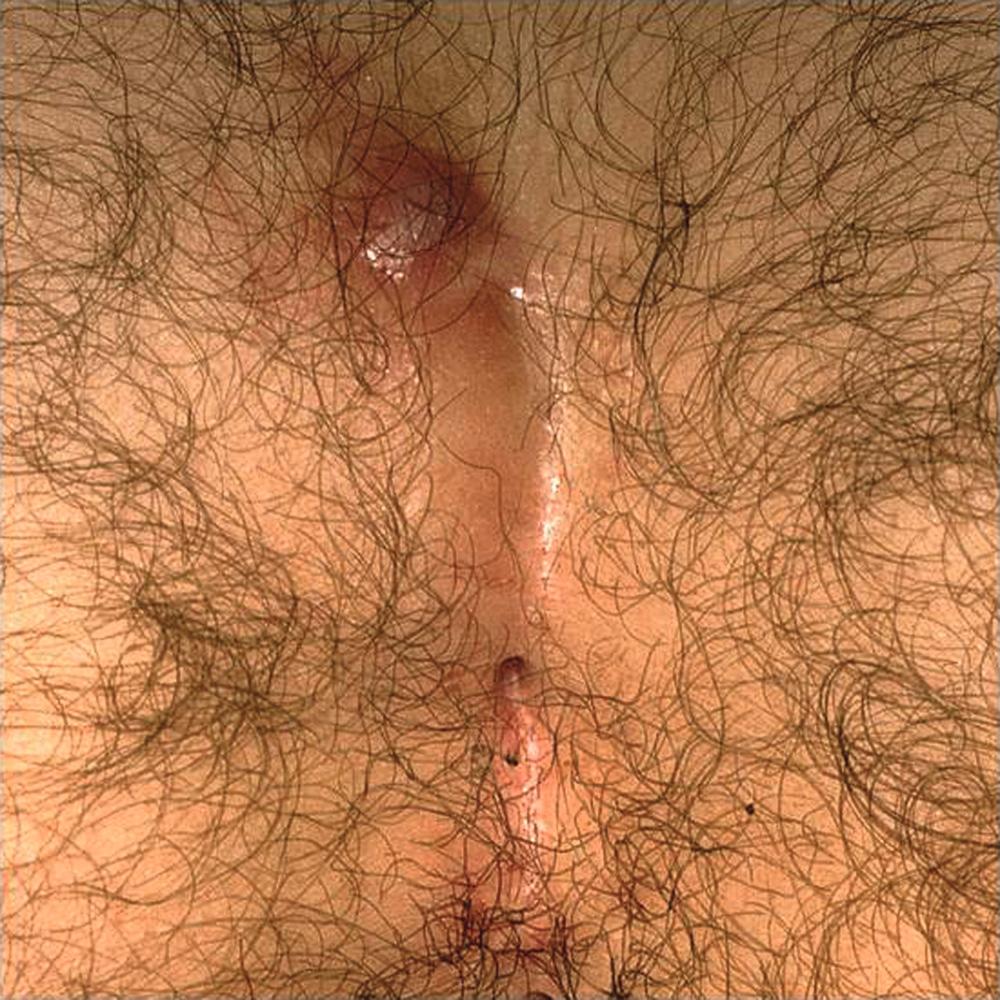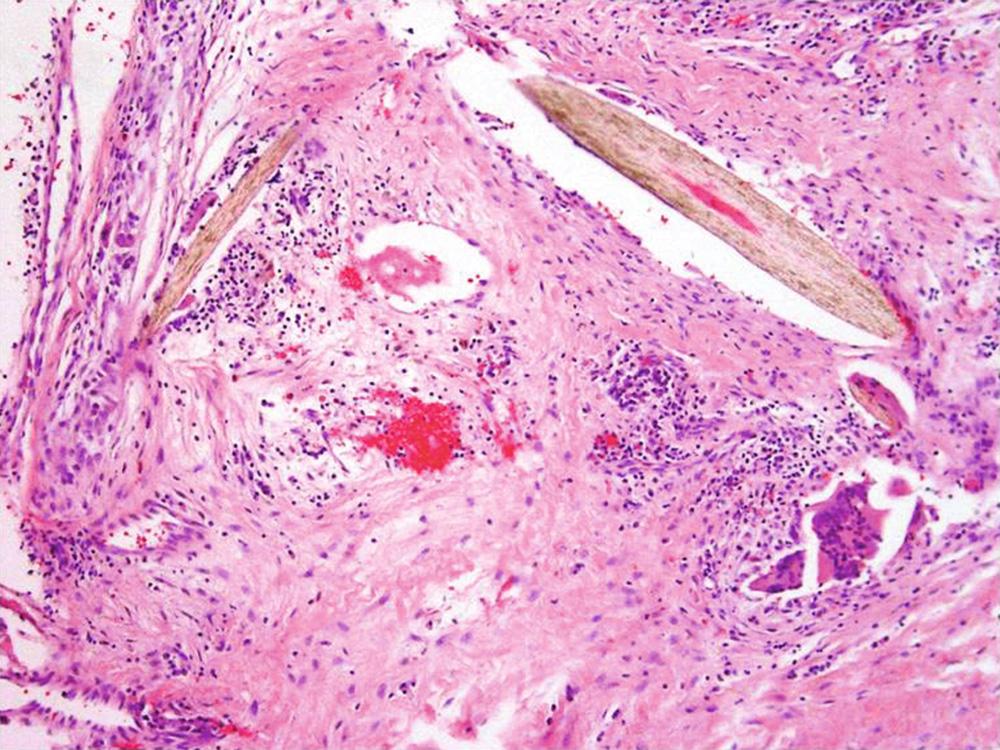Physical Address
304 North Cardinal St.
Dorchester Center, MA 02124
Sacrococcygeal pilonidal disease (PD) has a calculated incidence of 26 per 100,000 people and is a source of morbidity in young adults due to the chronicity of disease and extent of surgical intervention. The current understanding is that this is an acquired disease resulting in subcutaneous trauma of hair shafts. Treatment of PD ranges from simple incision and drainage to excision with flap reconstruction. Wound complications and recurrence remain high despite available therapies, making this a challenging disease process for both the patient and surgeon.
The pathogenesis of PD has evolved since its first description by M. Hodges in 1880 as a sinus containing a nest (nidus) of hair (pilas) . Many theories have existed attributing PD as either a congenital or acquired condition. In 1935, Gage proposed that sinus disease was secondary to anomalous embryonic development of the medullary canal. Other theories supposed that PD was caused by idiopathic invagination of integumentary structures, as evidenced by the classic sacrococcygeal dimple.
The acquired theory was supposed in World War II by Hardaway, who noted that PD was “apparently much commoner in the military service than in civilian life,” attributing the difference to the predilection to young men in conditions of poor hygiene. It was postulated that compression and irritation of the coccyx during field activities such as driving in jeeps was the underlying cause of PD, hence the term “jeep disease.” PD was a significant source of disability and working days lost for enlisted men, stimulating the need for less morbid treatment options. In 1946, Patey and Scarff further supported the acquired theory with histologic comparison of the epithelialized tracts seen in congenital dermoids with the granulation tissue–lined tracts of pilonidal sinuses, postulating that this is an “infective track” formed from surface hairs that have deeply penetrated the dermis causing a foreign-body granulomatous reaction. Their observations of pilonidal sinuses in other areas such as the umbilicus and in the intertriginous folds of a barbers hands supported this theory.
Further contributions by Bascom described the role of the intergluteal cleft in creating a vacuum force that directs hair foreign bodies into the subcutaneous tissue. This provided the rationale behind the Bascom flap procedure, which produces effacement of the intergluteal cleft in addition to excision of sinus tissue. In 1992, Karydakis theorized that three main factors underlie pathogenesis: the invasion of loose hair, the force which causes hair embedding, and the vulnerability of the affected skin. This concept motivated the Karydakis flap, wherein the sinus is excised and the intergluteal skin is replaced by more “resistant” gluteal skin through a sliding flap. In more recent electron microscopy analysis of pilonidal sinus nest hair samples, the majority of embedded hair is rootless, with razor sharp ends. As such, the current prevailing mechanism of action appears to be acquired and that of local irritation from embedding of loose cut hairs.
Sacrococcygeal PD is 2.2 times more common in men. Presentation occurs in the second and third decades of life and rarely before the age of 15 or after the age of 40, with a median of 2 years of symptoms prior to treatment. Risk factors include obesity, degree of hair growth, family history of PD, local trauma, and sedentary occupation. PD is most common among white, non-Hispanic populations and rare in Asian/Pacific Islander heritage. The rate is unusually high in Turkey, with a reported incidence of 6% in young adults.
PD presents in an acute form as an abscess or in chronic form with single or multiple branching draining sinuses. Abscesses present with sacrococcygeal pain with progression into a fluctuant mass slightly off the midline with overlying cellulitis situated just above the gluteal cleft and cephalad to the visible midline pits ( Fig. 153.1 ). Acute abscess is the presenting finding in approximately 50% of patients and constitutes 20% of dermatologic complaints seen in the emergency department.

Following spontaneous drainage, a chronic cavity may develop which drains via a simple or complex sinus associated with one or multiple pits located in the midline. Sinus tracts characteristically contain hair debris that is easily removed with forceps.
The characteristic appearance of PD makes this a clinical diagnosis; however, other pathologies can appear similar. Furuncle disease, hidradenitis suppurativa (HS), perianal abscess or fistula, sacral osteomyelitis, syphilis, tuberculosis, and actinomycosis should be excluded. Malignant degeneration is reported in 0.1% of cases, emphasizing the need for histologic examination of excised specimens. Patients found to have PD-related malignancy have long-standing disease and are typically middle-aged and male. Histology is predominantly squamous cell carcinoma.
Histologically, the midline pits are lined with squamous epithelium. The underlying cavities are not epithelialized but lined with granulation tissue. Pilonidal cavities rarely contain sweat glands or hair follicles, although hair shafts are found 75% of the time. Foreign-body giant cells associated with hair shafts are seen within a background of chronic granulation tissue ( Fig. 153.2 ). The microbiology of the pilonidal sinus is typically gram-negative and anaerobic organisms, with a shift toward gram-positive and aerobic bacteria in recurrent disease.

The evolution of pathogenesis has paralleled the treatment options. When the congenital theory prevailed, procedures were guided by the premise of complete extirpation of subcutaneous tissue to the level of the sacral fascia. The need to preserve active working days for military recruits in World War II to the modern era stimulated a need for conservative excisional techniques. With the acquired theory, complex resections with primary closure aim to address both the offending tissue and the underlying mechanical etiology. In recent Cochrane review comparing open approach versus primary closure, there is no clear benefit in the type of technique with regard to healing time and surgical site infection; however, primary closure techniques fare best when the incision is placed off-midline. Ultimately the goal is complete wound healing with minimal patient disability and a low rate of recurrence; therefore the surgeon must individualize the approach to suit the needs and expectations of the patient.
Acutely, simple incision and drainage is the standard treatment to provide prompt symptom relief. In patients with acute abscess formation, a staged approach should be employed as definitive resection with abscess excision results in higher rates of recurrence. This is attributed in part to contamination of tissue and tissue edema obscuring the midline sinus, leading to incomplete excision.
Drainage procedures can be performed in the office, emergency room, or an outpatient ambulatory surgical setting. The sacrococcygeal region is best exposed in the prone jackknife position with the buttocks taped apart. A paramedian longitudinal incision is made over the abscess cavity that is large enough to allow for adequate drainage. All debris and hair should be removed from the cavity. Unroofing and fulguration of all sinus tracts is supported even in the acute phase with a healing time of 5.4 ± 1.1 weeks and a low rate of recurrence of 2% at 54-month follow-up. Alternative treatment with aspiration of the abscess cavity has been described as a temporizing bridge to definitive resection.
Retained hair in the abscess cavity is the major factor for nonhealing and recurrence. The patient should perform sitz baths for hygiene. Weekly wound checks are recommended to ensure that the wound and surrounding skin remain free of hair and other debris during healing. Laser hair removal can be offered as an adjunctive therapy during wound healing, as well as a long-term approach to decreasing hair growth in the involved area.
Approximately 15% to 40% of patients treated for acute abscess will progress to chronic PD. Eight percent to 30% of patients with chronic PD will recur following definitive treatment, emphasizing the tenacity of this disease, despite available therapies. Treatment options vary from nonresectional approaches, midline follicle excision and lateral drainage, incision and curettage with minimal excision followed by marsupialization or saucerization of the wound, and excision with or without primary closure. There is no clear consensus as to the preferred treatment; however, it is desirable to select an approach that can be carried out in an ambulatory setting with minimal patient inconvenience and disability. The role of antibiotics is not clear; there have been reports that have suggested antibiotics directed at anaerobic bacteria may improve healing rates.
Armstrong and Barcia advocated nonexcisional therapy consisting of meticulous hair control by shaving, good perineal hygiene, and limited lateral incision and drainage of abscesses. Hair, when visible, should be removed. Complete healing was demonstrated in 101 consecutive cases over a 1-year period.
Instillation of liquid or crystalline phenol causes an intense inflammatory reaction to promote closure of the cavity and tracts. This method has limited use due to pain and may require hospitalization for analgesia.
Become a Clinical Tree membership for Full access and enjoy Unlimited articles
If you are a member. Log in here